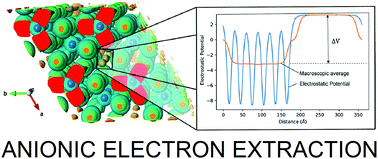Ultralow work function of the electride Sr3CrN3
Abstract
Electrides have valence electrons that occupy free space in the crystal structure, making them easier to extract. This feature can be used in catalysis for important reactions that usually require a high-temperature and high-pressure environments, such as ammonia synthesis. In this paper, we use density functional theory to investigate the behaviour of interstitial electrons of the 1-dimensional electride Sr3CrN3. We find that the bulk excess electron density persists on introduction of surface terminations, that the crystal termination perpendicular to the 1D free-electron channel is highly stable and we confirm an extremely low work function with hybrid functional methods. Our results indicate that Sr3CrN3 is a potentially important novel catalyst, with accessible, directional and extractable free electron density.



 Please wait while we load your content...
Please wait while we load your content...